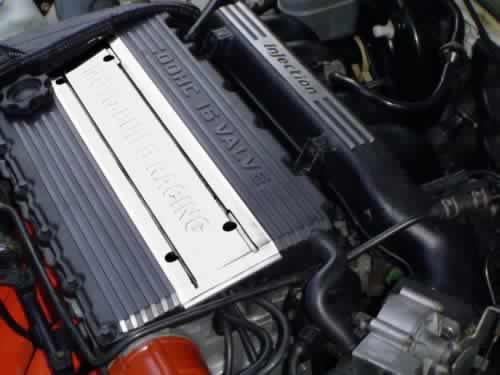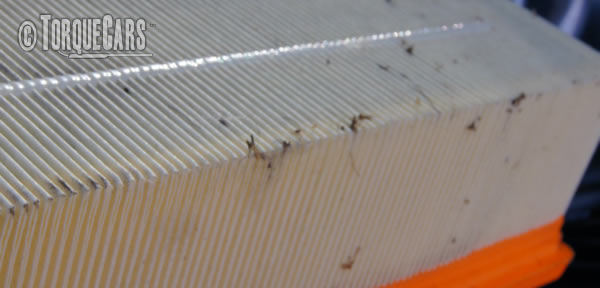It’s festive season,..
TorqueCars quick guide to Servicing a car.
You can save a lot of money by servicing a car yourself. You also have the advantage of knowing that you have used top quality components and have done a good job.
It really is quite simple to perform a basic full service and does not require any more than the ability to tighten or loosen a nut or screw!
Save money on garage bills by servicing the car yourself.
TorqueCars Tools list.
You'll need a oil filter removal tool which looks a bit like a bicycle chain with a handle (if sandpaper doesn't work)
Spark plug tool.
Spanner or socket set for the sump plug (the oil drain plug).
Screw driver for the air filter housing (many have snap on clips instead!)
Jack - raise the car to check each wheels bearings by rocking the wheel and seeing if there is excessive play.
Tyre Pump - to ensure the tyres are all at the correct pressure.
Anti freeze gravity gauge - looks a bit like a turkey baster.
Oil catch pan to collect the old engine oil for safe disposal.
You'll need a oil filter removal tool which looks a bit like a bicycle chain with a handle (if sandpaper doesn't work)
Spark plug tool.
Spanner or socket set for the sump plug (the oil drain plug).
Screw driver for the air filter housing (many have snap on clips instead!)
Jack - raise the car to check each wheels bearings by rocking the wheel and seeing if there is excessive play.
Tyre Pump - to ensure the tyres are all at the correct pressure.
Anti freeze gravity gauge - looks a bit like a turkey baster.
Oil catch pan to collect the old engine oil for safe disposal.
DO NOT ATTEMPT TO: BURN OLD ENGINE OIL and do not POUR INTO THE DRAIN, TOILET OR POUR ON THE GROUND.

TorqueCars Parts required.
Oil - Get the correct grade - see your cars instruction book and note that sports (thin) oil can actually cause damage in an old or low performance engine just as too thick an oil can clog up the fuel pump and fail to lubricate the engine. Use a funnel if you have shaky hands - you don't want oil on the engine.
Oil - Get the correct grade - see your cars instruction book and note that sports (thin) oil can actually cause damage in an old or low performance engine just as too thick an oil can clog up the fuel pump and fail to lubricate the engine. Use a funnel if you have shaky hands - you don't want oil on the engine.
Oil should be changed every 6000 miles and certainly at least once per year. Because oil degrades over time it should be regularly replaced and is the best way to guarantee a long engine life.
Oil Filter - I prefer to avoid non brand makes as the filtration is sometimes much worse. A magnet that attaches to the oil filter catches small metal particles and stops engine wear is worth getting if you can source one. Use a proper oil filter removal tool or alternatively a piece of sandpaper may help you to grip it.
Sump washer - Never use the old sump plug washer either - keep a few as spares.
Sump washer - Never use the old sump plug washer either - keep a few as spares.
Plugs - Get a good quality brand with a copper core electrode (quads, splits and triples not really necessary for most road cars.) Plugs last for 1 year although some cars use iridium or platinum plugs which are rated for 40,000 miles or 4 years. Read more on Spark Plugs
Leads - These only need replacing if they start to deteriorate and a good set of leads should last easily for 10 years.

Filter - air filter - really easy replacement which just drops in. Typically the air filter housing is secured with a few screws or clips. You may have to unplug sensor cables and the air flow meter to gain access but you can normally get away without doing that in most cars. An air filter will last for 1 year, unless you live in a very dusty area. Read more on air filters here....
A visual check will reveal if it is dirty. TorqueCars really rate the high flow washable sponge and cotton gauze air filters, you get more power and as its washable you save money in the long run.
Anti freeze - gravity gauge will do this for you and top up as required. Always ensure that you have sufficient antifreeze to cope with a -20 degree temperature below your expected lowest temperature. Antifreeze acts as a coolant so it has a benefit in the summer as well.
Washers - top up washers with a screen cleaner and clean water - cold pre boiled water will reduce bodywork streaking as does filtered water (Do not use washing up liquid!)
Oil - Drain the old oil from the engine. First run the engine so that the oil is warm, place the catch pan under the sump and loosen the sump nut taking car that it does not fall in to the hole of the catch pan. Be careful as the oil is very HOT! I think we have all scalded our hands on hot oil at least once in our lives.
When the engine is empty of oil replace the sump washer and sump nut and then fill the engine to top of mark on dipstick NEVER over or UNDER the lower mark. Pour slowly pausing and allowing the dipstick level to settle and check.
It is generally better to be slightly under than over as it is much easier to top up than drain off the oil. It can take 5-10 minutes for the level to settle, aim to get half the dipstick level at first. Then when the car has been standing top up again aiming for the top level of the dipstick. Read more on engine oil here...
Spark plugs - remove the old plugs and check them for pitting, oil fouling etc. This will tell you a lot about the condition of the engine and ideally the plugs should have a dark grey sooty appearance. If this is light grey the engine is running lean or black implies that the engine is running rich. (Greasy black plugs can indicate an oil leak).
The new plugs should be fitted so they are finger tight so if you have a deep hole they drop into just use the plug removal tool as if it were a screwdriver until it is finger tight. Be careful not to cross thread it as you screw it in - this is why we suggest finger tight initially.
Then make a quarter to half of an extra turn further using the grip and handle of the plug removal tool. If the plugs are not tight they could pop out causing a sudden loss of power and if they are too tight you could damage the thread in the head of the engine as this is softer than the thread of the plug.
Suspension - Check shock absorbers for leaks and wear (bounce each corner of the car and it should settle again within 3 bounces). Check all bushes (rubber blocks and mounting points) and ball joints for signs of wear and play. Read more on suspension settings here....
Lights - Check all lights (use a mirror or reflection in a window placed behind the car to check rears if you don't have a second pair of eyes to help). Don't forget the number plate light. Read more on headlight bulbs here...
Oil door hinges with white grease (close and open the greased doors fully to ensure the surface is covered).
Steering - Check rack and track rod ends for play. Wobble the wheel as you drive along and you should get a slight wobble from the car. If there is free play and the car takes a fraction of a turn to respond then get your steering checked out.
CV Boots (FWD) - These are the rubber covers over the flexible joint from the gearbox to the wheels. Check these at full right and left lock for cracks. They will need replacing if they are cracked as the joint will dry out and wear very quickly.
Brakes - Do the pads still have good depth left on them. Replace brakes if they start to squeal and preferably just before. If the disc is becoming glazed you can rough it up a little with a course grade sandpaper or wire brush. Apply a little copper grease to the movable parts taking care not to get this on the discs or pads!
Check the brake fluid level and gravity - this should be renewed every 2-3 years in most cars. (Do not leave the top off the brake fluid reservoir as it sucks in water vapour and this is really bad for braking.) Read more on brakes here....
Exhaust - Check for leaks/severe corrosion and make sure all hanger rubbers are there and not split. With a torch at night you can see very clearly any cracks or gaps in the exhaust. This is particularly handy for tracking down tiny exhaust leaks. Read more about exhausts here...
Seatbelts - Make sure all seat belts fasten and give them a good tug to ensure they lock. If belts have become frayed, fail to lock or do not recoil when released replace them.
Tyres (US Tire) - Check all tyres for cuts and damage to the sidewall. Check that the tread depth is legal and also take time to check the tyre pressures - this is something you should do weekly. If the pressure is low suspect a slow puncture and check thoroughly with water mixed with washing up liquid - bubbles will form where the puncture is. Read more on tyres here...
Tag :
Keselamatan,
Permotoran

0 Komentar untuk "Have U Service Ur Car…"